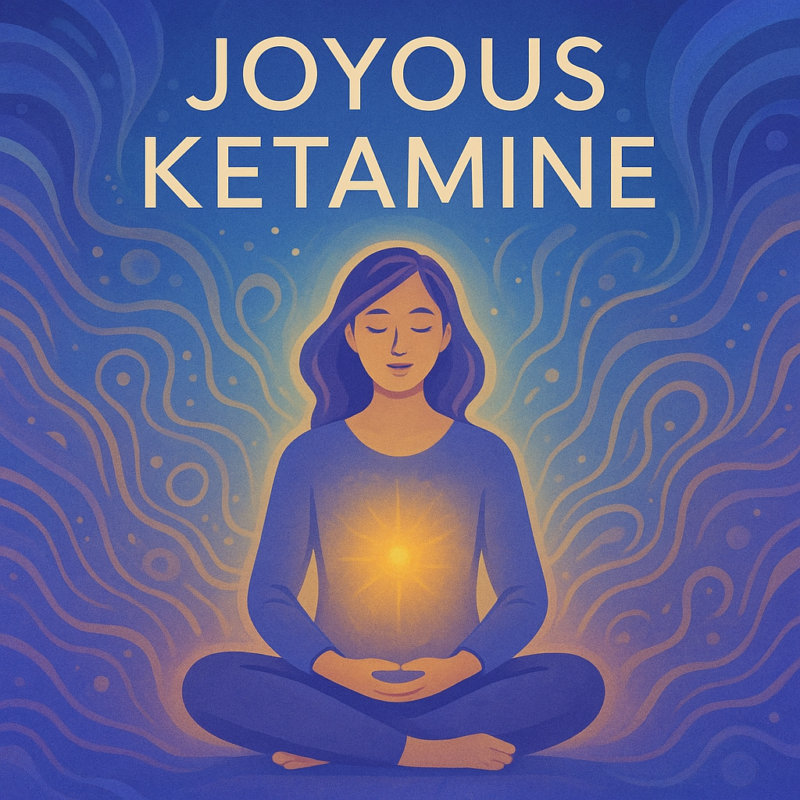
Joyous Ketamine: Exploring Healing, Wellness, and Hope
Over the past decade, the conversation around mental health treatments has shifted dramatically. Once stigmatized or misunderstood, substances like ketamine are now gaining recognition as powerful tools for healing. In fact, one of the most promising approaches today is something often referred to as “Joyous Ketamine.”
But what does this phrase mean? How does ketamine therapy work? And why are so many people reporting profound breakthroughs in depression, anxiety, and PTSD treatment through ketamine?
As an industry expert in psychedelic-assisted therapy, I’ll break down everything you need to know about Joyous Ketamine, weaving together clinical insights, real-world experiences, and future possibilities.
What Is Joyous Ketamine?
“Joyous Ketamine” is a phrase that captures the transformative and uplifting experiences many patients report during ketamine-assisted therapy sessions.
Traditionally known as an anesthetic, ketamine has been repurposed in modern medicine for mental health. In controlled, therapeutic settings, it helps individuals access deep emotional states, ease depressive symptoms, and even achieve lasting joy after long battles with mental illness.
So, when we talk about Joyous Ketamine, we’re not just referring to the chemical—it’s about the outcomes: a renewed sense of hope, clarity, and happiness.
Why Ketamine Is Different from Other Treatments
Conventional antidepressants (SSRIs and SNRIs) take weeks or months to work, and for many, they never provide relief. By contrast, ketamine acts quickly—sometimes within hours.
Here’s why Joyous Ketamine therapy stands out:
- Rapid Relief – Many patients report mood improvement within 24 hours.
- Breakthrough Results – Helps treatment-resistant depression when nothing else works.
- Neuroplasticity Boost – Promotes brain connections, supporting long-term healing.
- Safe in Clinical Settings – When administered by professionals, risks are minimal.
The Joyous Ketamine Experience: What It Feels Like
Patients often describe ketamine therapy as calm, introspective, and expansive. Unlike recreational misuse, clinical sessions involve carefully measured doses tailored to each individual.
Common experiences include:
- A sense of floating or weightlessness.
- Emotional release and relief from inner tension.
- New perspectives on old problems.
- A feeling of deep joy or serenity (hence the phrase Joyous Ketamine).
One client of mine put it beautifully: “It was like my depression had a volume dial, and someone finally turned it down. I walked out smiling for the first time in months.”
How Joyous Ketamine Therapy Works
- Assessment – Patients are carefully screened for mental and physical health conditions.
- Preparation – A safe, supportive setting is created with therapists or medical staff present.
- Administration – Ketamine is delivered intravenously, intramuscularly, or as a lozenge.
- Integration – After the session, therapists help process the experience and anchor insights.
The combination of the medicine and the therapeutic container makes the healing process more sustainable and impactful.
Conditions Joyous Ketamine Can Help With
Ketamine therapy has shown success in addressing a wide range of conditions:
- Treatment-resistant depression
- Anxiety disorders
- Post-traumatic stress disorder (PTSD)
- Addiction recovery
- Chronic pain management
By unlocking emotional barriers and restoring neural flexibility, Joyous Ketamine sessions can create space for profound healing.
The Science Behind Joyous Ketamine
On a neurological level, ketamine works by:
- Blocking NMDA receptors, which helps reset overactive brain circuits.
- Increasing glutamate release, encouraging new neural pathways.
- Enhancing neuroplasticity, making the brain more adaptable and resilient.
These effects explain why patients often describe a sense of “joyous renewal” after sessions.
My Personal Perspective as a Practitioner
I’ve seen firsthand how Joyous Ketamine therapy can transform lives.
One patient, after years of battling severe depression, described her first ketamine session as a “glimpse of joy I had forgotten was possible.” Another spoke of the ability to finally confront trauma without feeling overwhelmed.
These aren’t isolated stories—they reflect the emerging consensus that ketamine, when used responsibly, is one of the most exciting tools in modern psychiatry.
Safety and Considerations
While the phrase “Joyous Ketamine” is uplifting, it’s important to approach therapy with caution and responsibility.
- Not for Everyone – People with certain heart conditions or histories of psychosis may not be good candidates.
- Controlled Environment – Recreational use is risky; medical oversight is essential.
- Temporary Relief – For lasting benefits, integration therapy is key.
The Future of Joyous Ketamine
The future is bright. More clinics are opening worldwide, and research continues to validate ketamine’s role in mental health care. Some companies are even developing at-home ketamine programs with virtual therapist support—bringing Joyous Ketamine into more accessible spaces.
As the stigma fades and clinical evidence grows, ketamine may soon move from “alternative” to “mainstream.”
FAQs About Joyous Ketamine
Q: Is ketamine legal?
Yes, ketamine is legal when prescribed by a licensed provider for medical purposes.
Q: How long do the effects last?
Mood improvements can last days to weeks after a session, with booster treatments available.
Q: Will I hallucinate?
Most people report visual or sensory shifts, but not full hallucinations like with LSD or psilocybin.
Q: How many sessions are needed?
Many patients benefit from a series of 4–6 treatments, followed by maintenance.
Final Thoughts: Why Joyous Ketamine Matters
At its heart, Joyous Ketamine is about more than a drug—it’s about reclaiming joy, hope, and resilience in the face of suffering.
For those who have tried everything without success, ketamine-assisted therapy offers a new path forward. And for practitioners like myself, witnessing the spark of joy return to a patient’s eyes is the greatest reward.